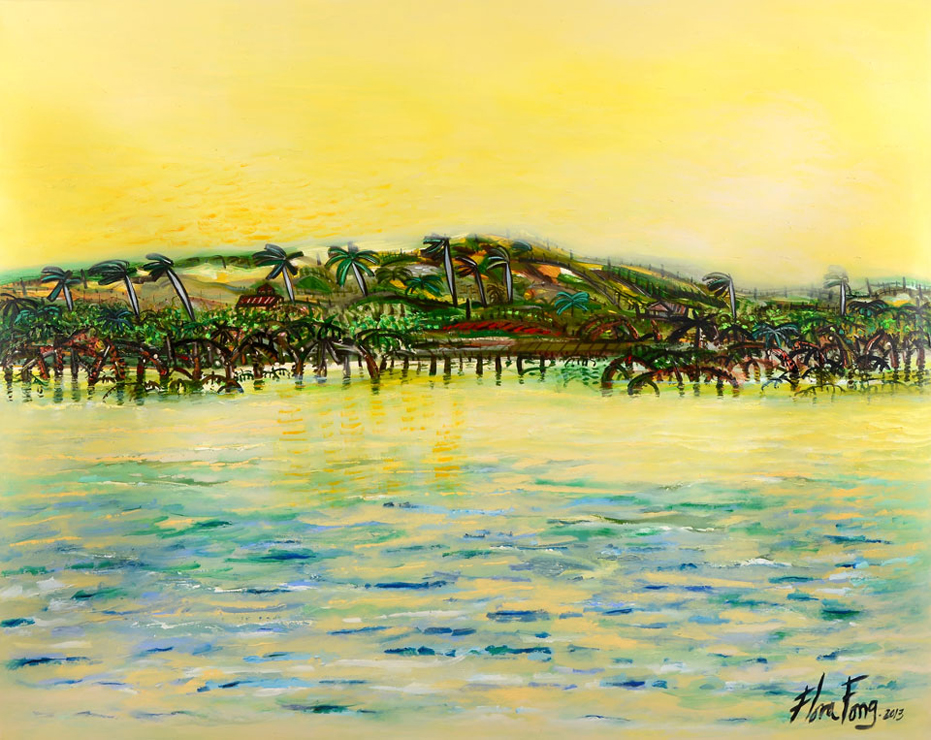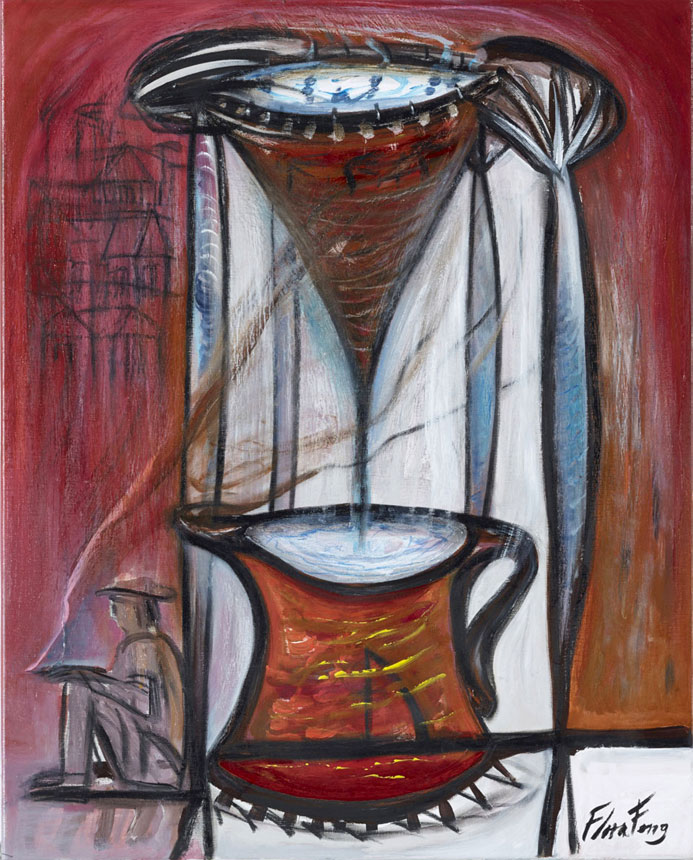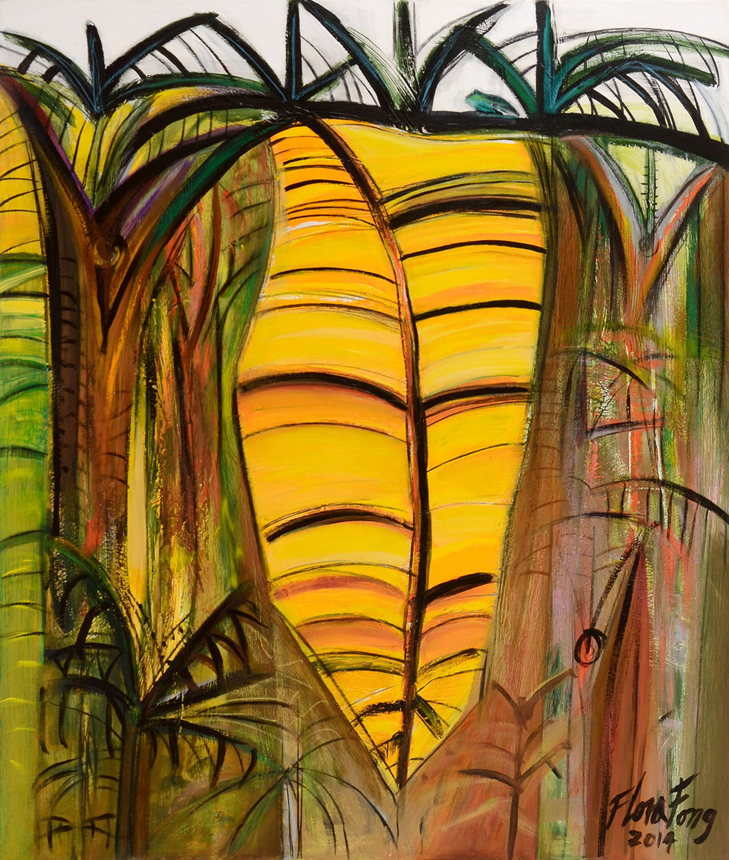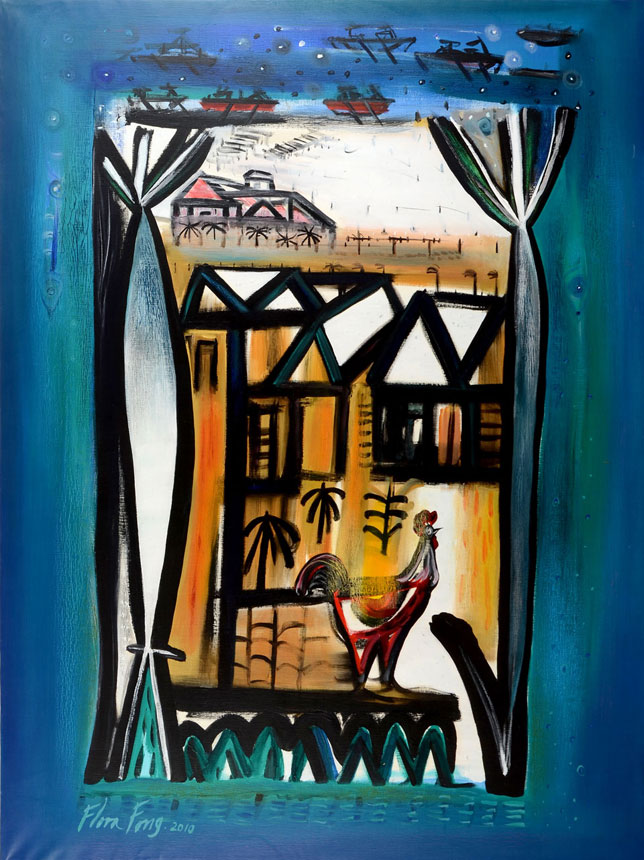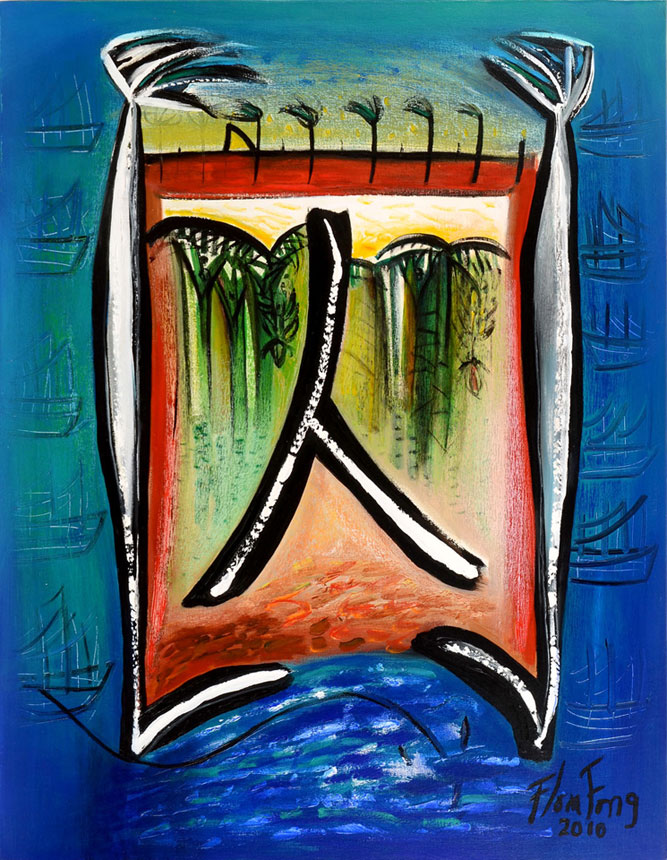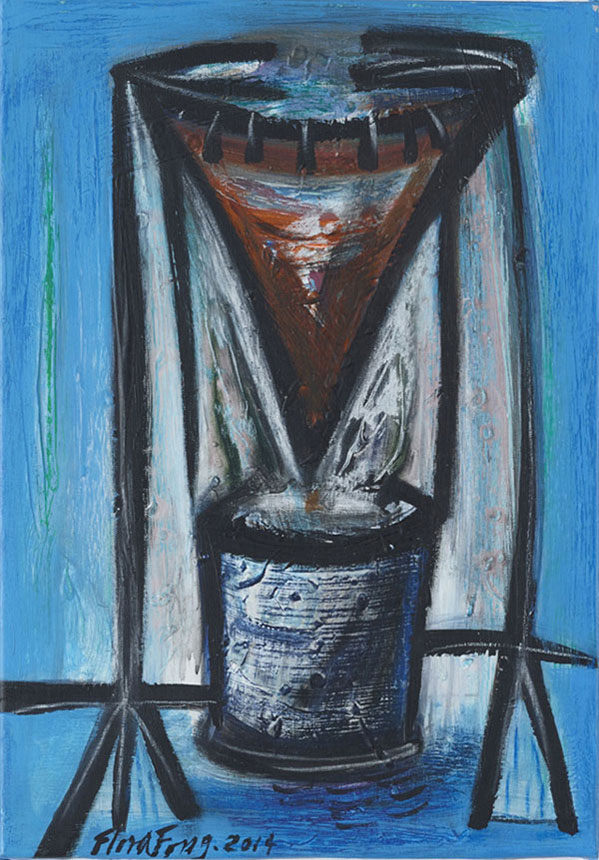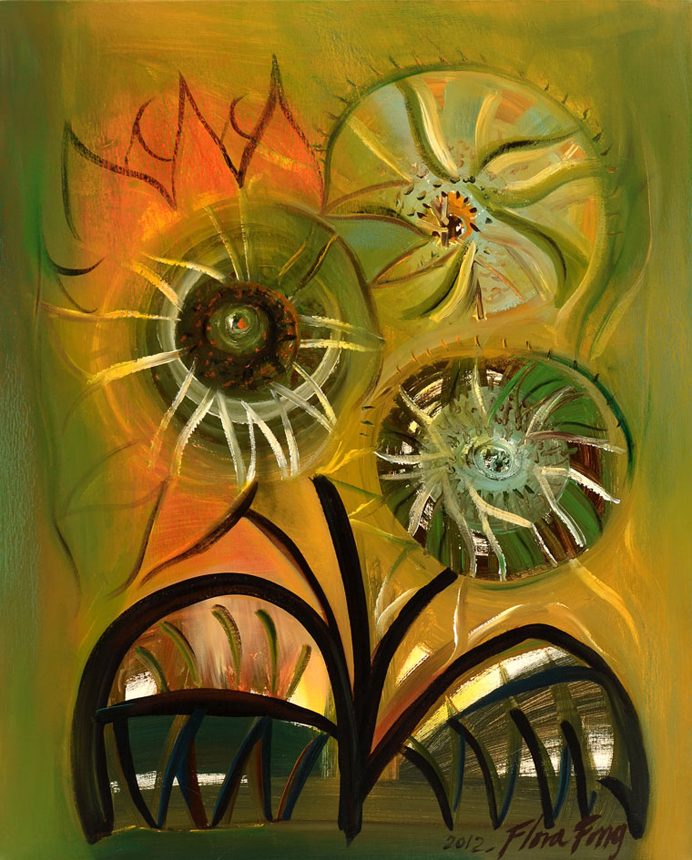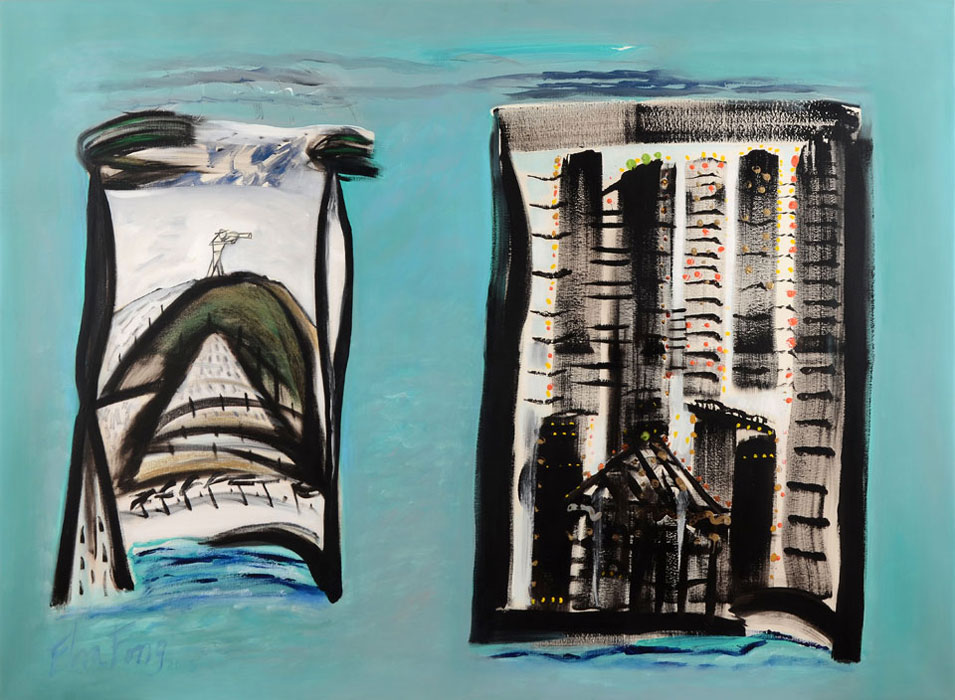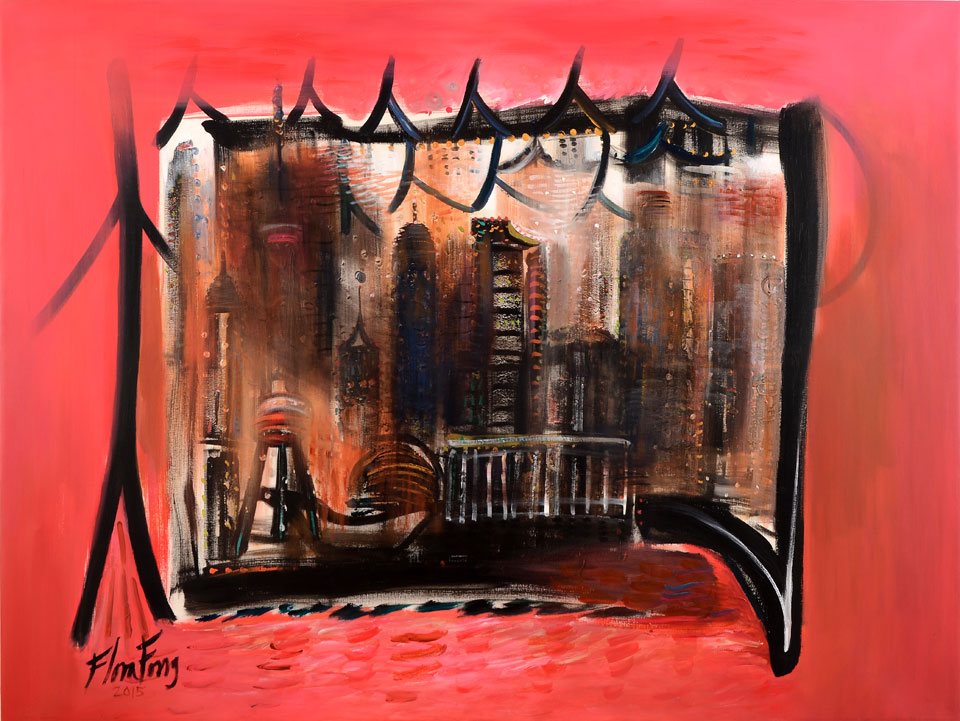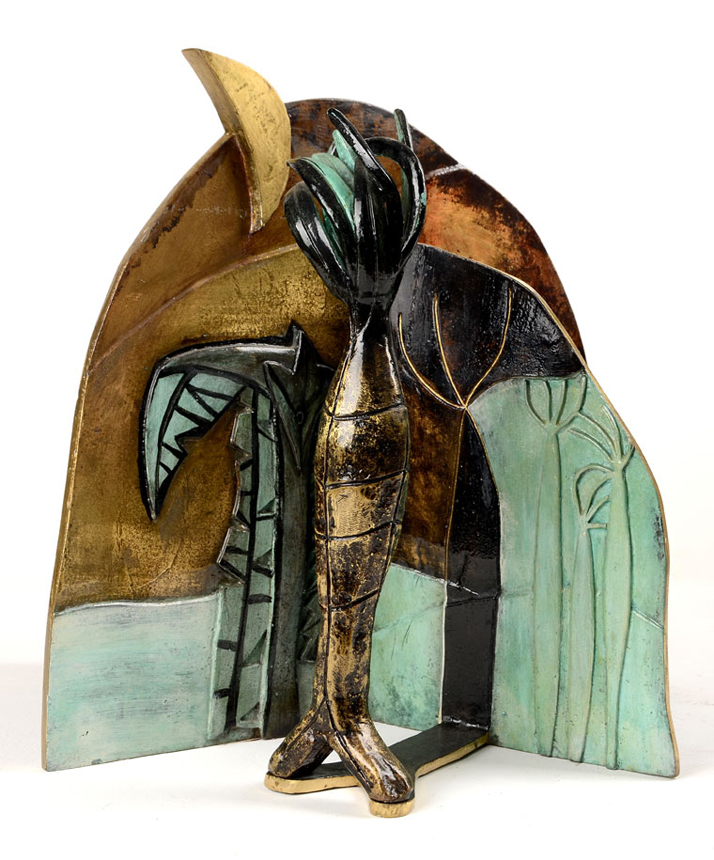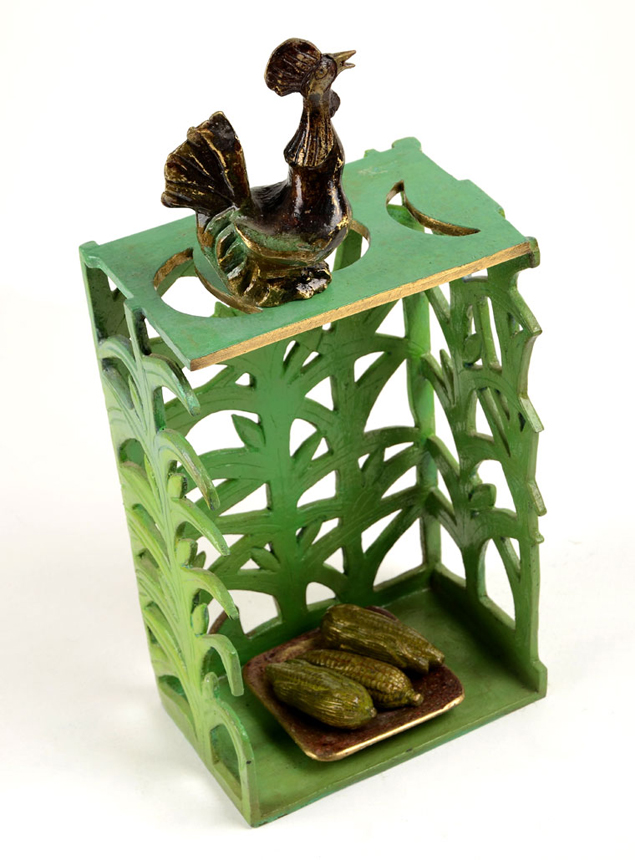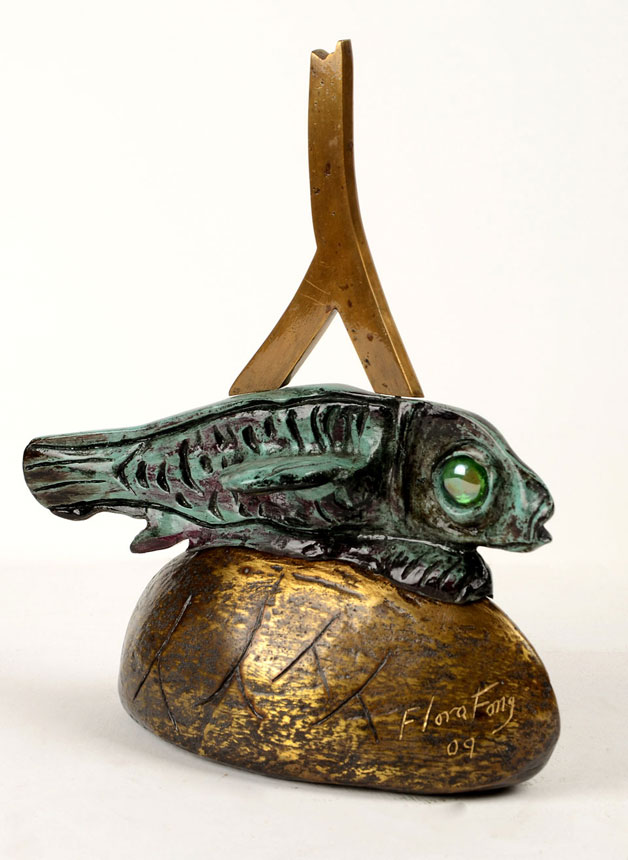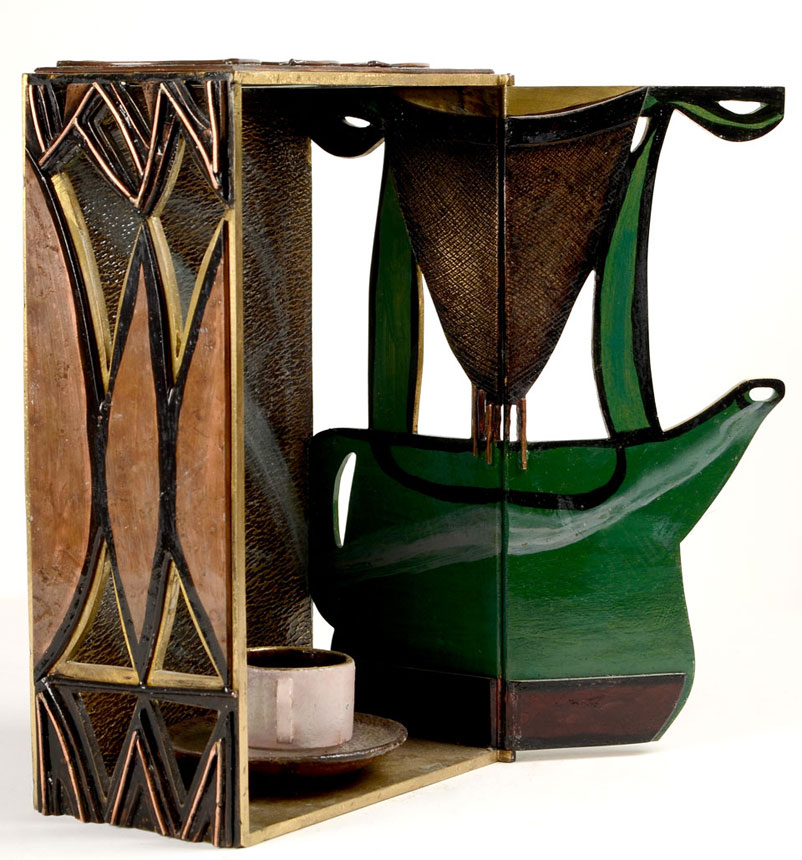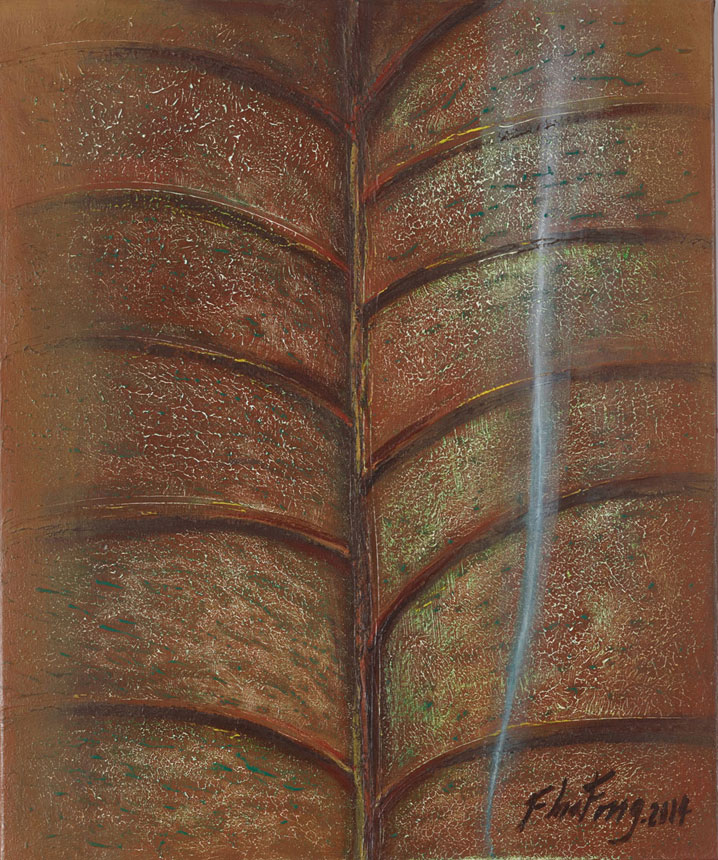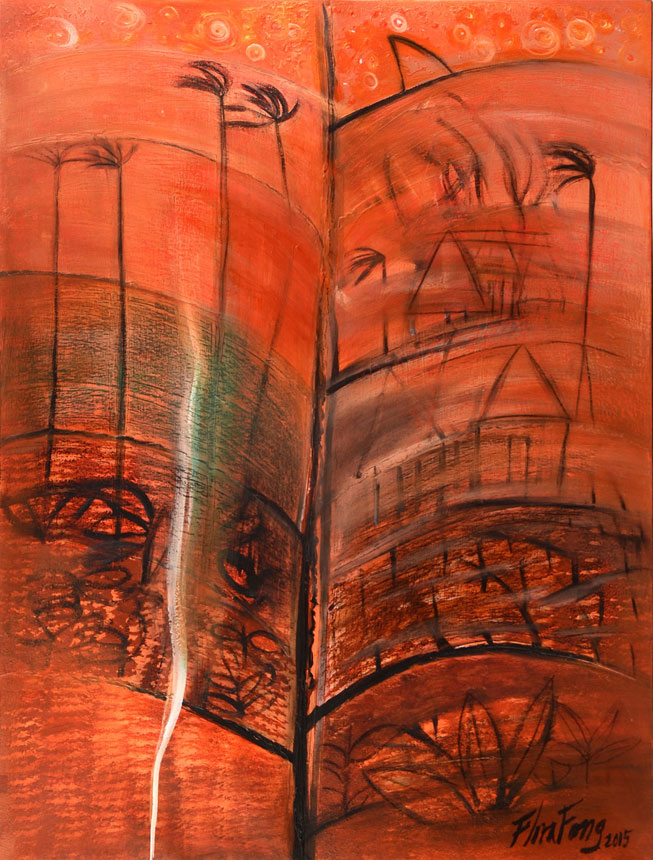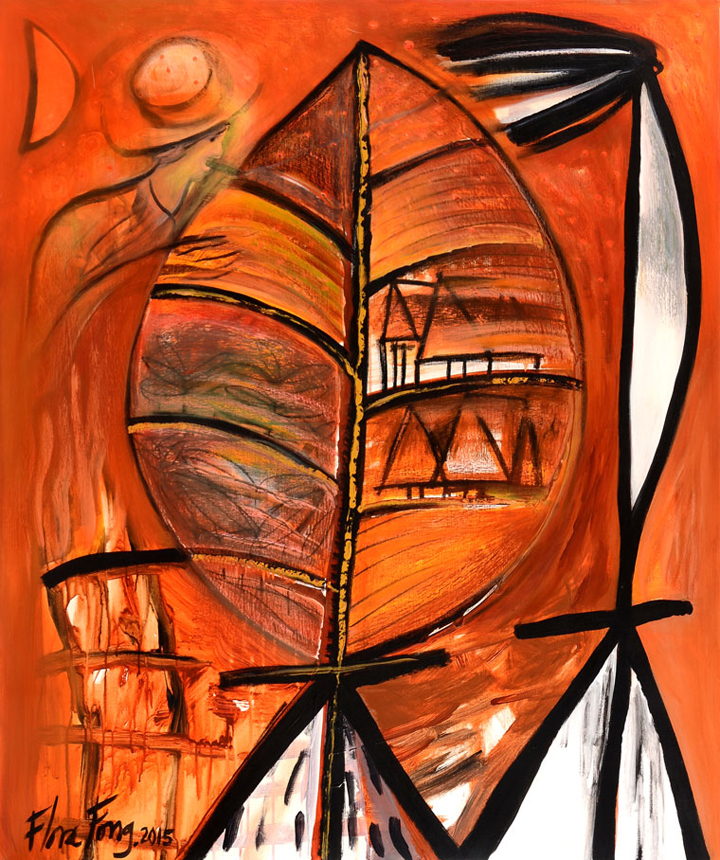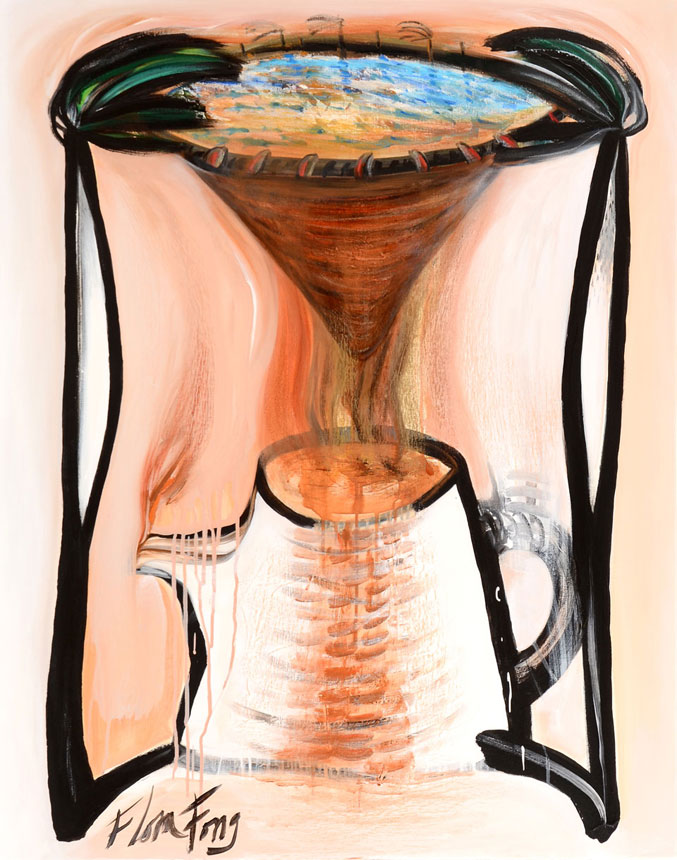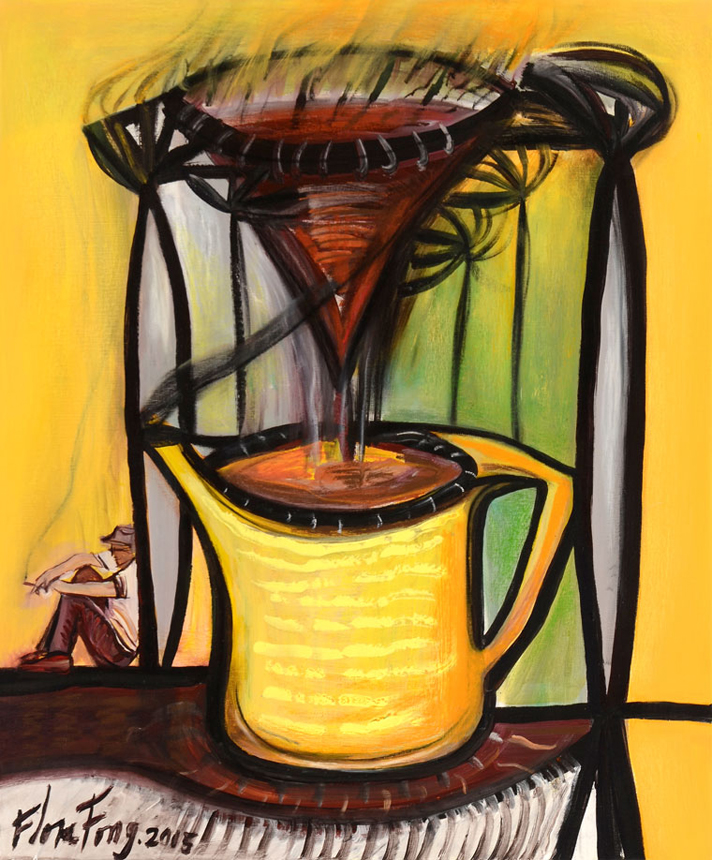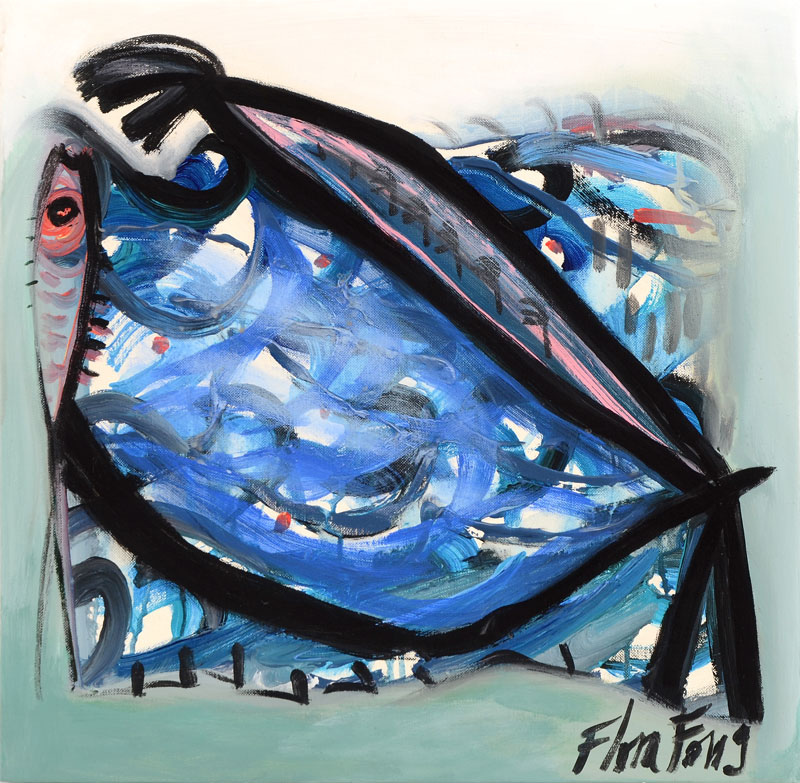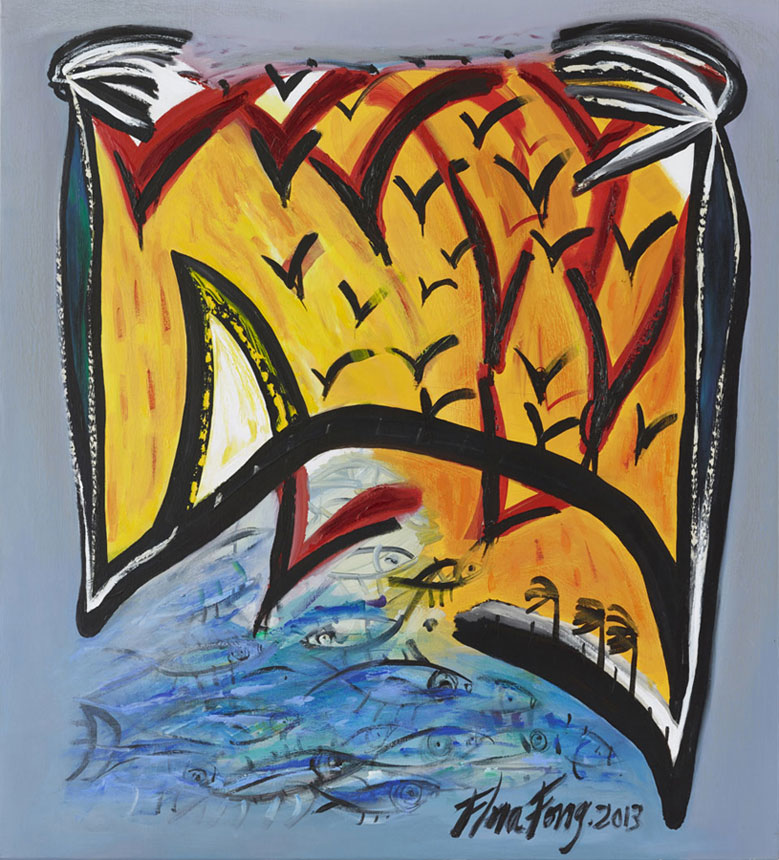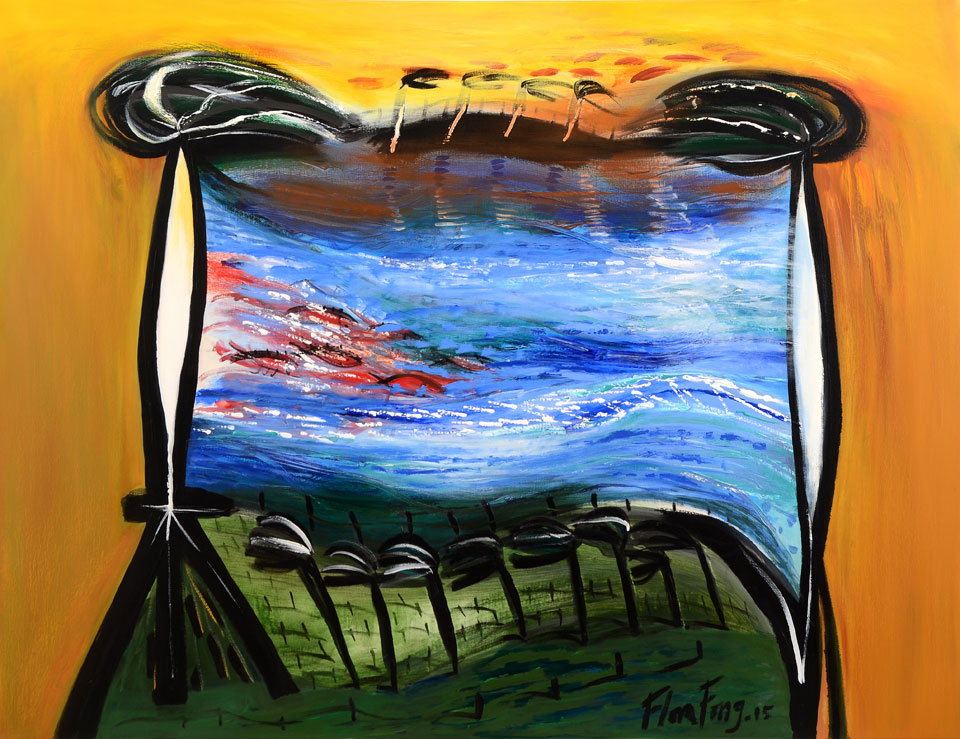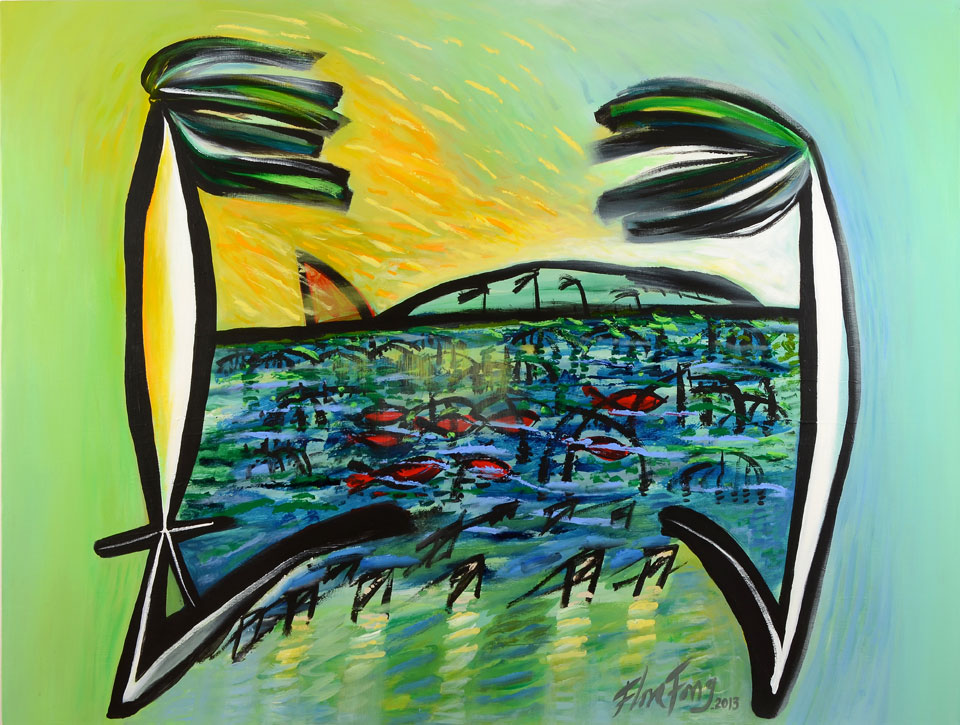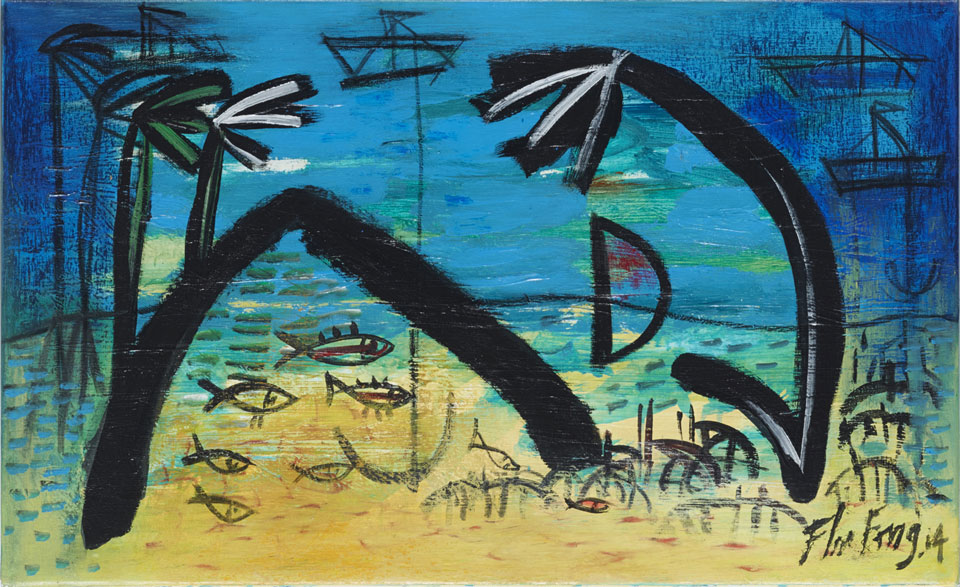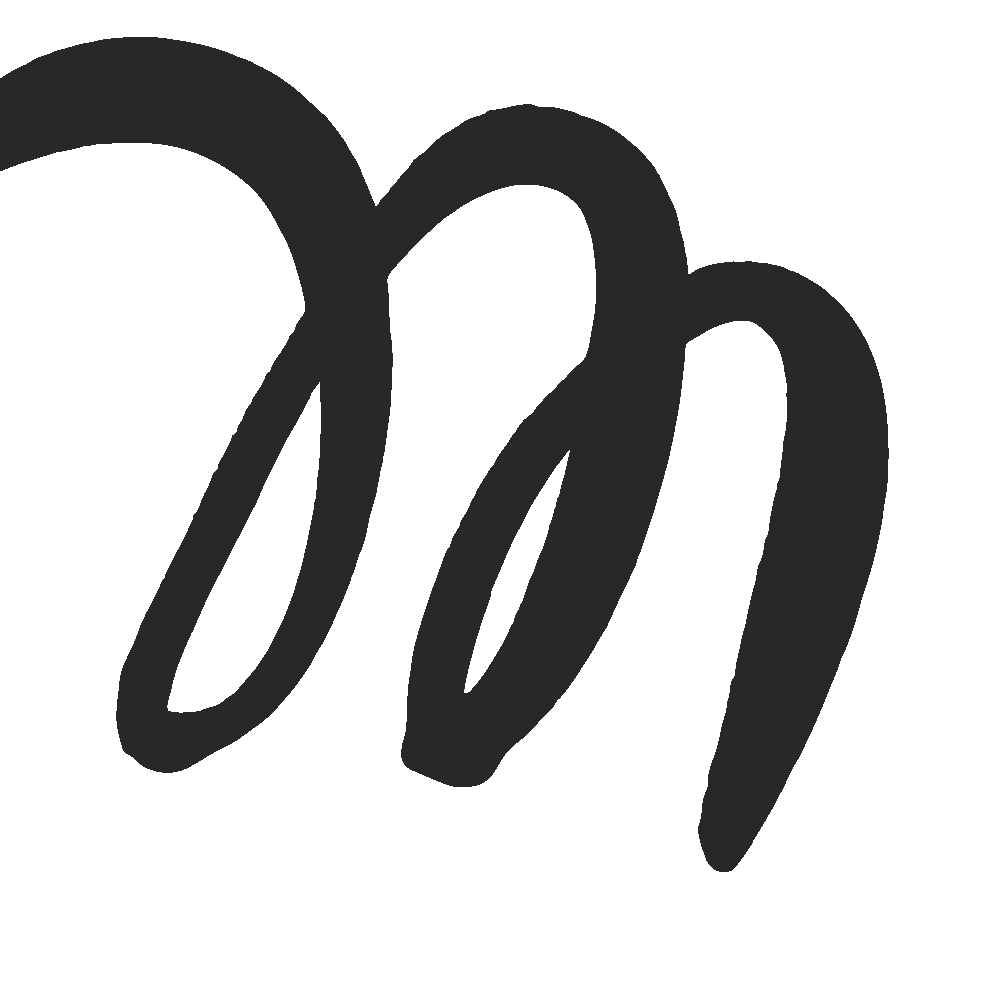Works and Commentary to Exhibition
The Sensible Cuban-ness of Flora Fong
Yolanda Wood
Combined evocations emerge from this collection of works by Cuban artist Flora Fong. In her images one perceives a tropical insularity that emerges from her palette full of shades and from her subtle handling of the sculpting material to capture – in art – certain essences of what made Cuba an emblem of identity and perpetuate from art certain “elixirs of national life”. Some of those keys come together in her work, established and mature, to convey in value, with her own personal expression, what an island of tobacco, coffee and many coasts in its extended geography recalls by tradition.
The painting surface in that ancestral leaf becomes tactile to the universe of beliefs of the peoples who inhabited the Antillean islands when the continent was still not called America; it’s an ochre figure because of its color and old because of its history, described by the most ancient chroniclers, and throughout time expert hands extended its image and use to a culture of pleasure throughout the world. In Flora Fong’s artistic space that leaf shows all its nervures, and superimposed on that framework, with painted motifs and velaturas, the artist suggests a “tobacco zone” in which a rural and peasant universe of palm leaf huts and straw hats continues to exist.
A fragrance of Cuban dawn is sensed in its steaming and fragrant coffee makers. Coffee makers that are unlike today’s French press or electric coffee makers, but of fabric sieves mounted on a metal or wooden base that recall, not just the time of grandmothers and great grandmothers, but a popular practice both in countryside and urban island homes. What a beautiful object, almost already inexistent, also recreated in three-dimensional bronze! From the moment the water started boiling, the coffee was inhaled before it was even tasted, and knowledge was required to control the amounts of coffee powder and water to reach the desired point in its texture and flavor. Those objects, already curiosities in our days, revive the time of memory in the artist’s work, who does it, in addition, with such creativeness and originality in forms and colors that the theme has become an essential part of Flora’s visual universe in contemporary Cuban art. In some of her coffee makers the observer will appreciate that palms make up part of the structure supporting the sieve and the burning liquid; like an act of magic, other palms or abstract landscapist evocations emerge above the surface of the boiling “potion”.
The palm is a national attribute on the island, a cultural sign that has found a fertile place in Flora Fong’s artistic work. With the palm she not only establishes that allegorical figure of the island’s nature but with the painted image vindicates her own Chinese-Cuban identity, her mixed origins, conceiving them through black lines that take as reference the delicate writing of the Asian country, its ways of representing and its so distinctive graphics.
With its crest, the palm announces the intensity and directions of the wind, and its erect image is imbued with dignity even if the thinness of its long trunk grants it a fragile appearance. With the blow of air that ruffles her, the palm also sways, moves, to always be and return to its place. That’s how Carlos Enríquez saw it in his voluptuous Cuban landscapes; so does it live in Flora Fong’s painting, where it receives a profound expressive load. In some of her pieces, the black strokes that outline the palm create the limits of a painting space in which a fragment of an island appears – painted. Those precise borders are cut out in the background as if separating from the whole to turn that place into another island. In her piece Chino en América (Chinese in America), the concept of person, represented by the calligraphic ideogram, inhabits that territory created by the artist as an autobiographical allegory, or in El pez dormido (The Sleeping Fish) where it is distinguished as a memorable and silent emblem.
These contrasts make up the work of Flora Fong, who was born in the center of the island, where the border to the north and south consists of blue coasts with saltpeter fragrance carried by the winds to let us know that the limit is already near; where one listens and feels the sea. Flora’s intense seas are beautiful. Something lovely is discovered in her drawings with fish and small boats, something childish but not in the least naïve. We imagine that the vessels, anchored in near-by territorial waters, have sailed around the island and toured its long and narrow immensity. They have sailed, they have left, they return, to always be in safe port, that of the sensitive Cuban-ness of their creator, Flora Fong.
Mexico, February 2015
Yolanda Wood Pujols (1950) Doctor in Art Sciences, Full Professor, Consultant Professor of the History of Art Department of the University of Havana. In 1985 she founded the History of Caribbean Art Chair. She is Director of the Center of Studies on the Caribbean at Casa de las Américas. She has published specialized articles, texts for catalogues and for book-catalogues of international exhibitions. Her most recent book, Islas del Caribe: naturaleza-arte-sociedad (Caribbean Islands: Nature-Art- Society), publishing house of the University of Havana and CLACSO, 2012, obtained the National Prize of the Artistic and Literary Critique in 2013. She has lectured in numerous institutions and participated in events of her specialty.

